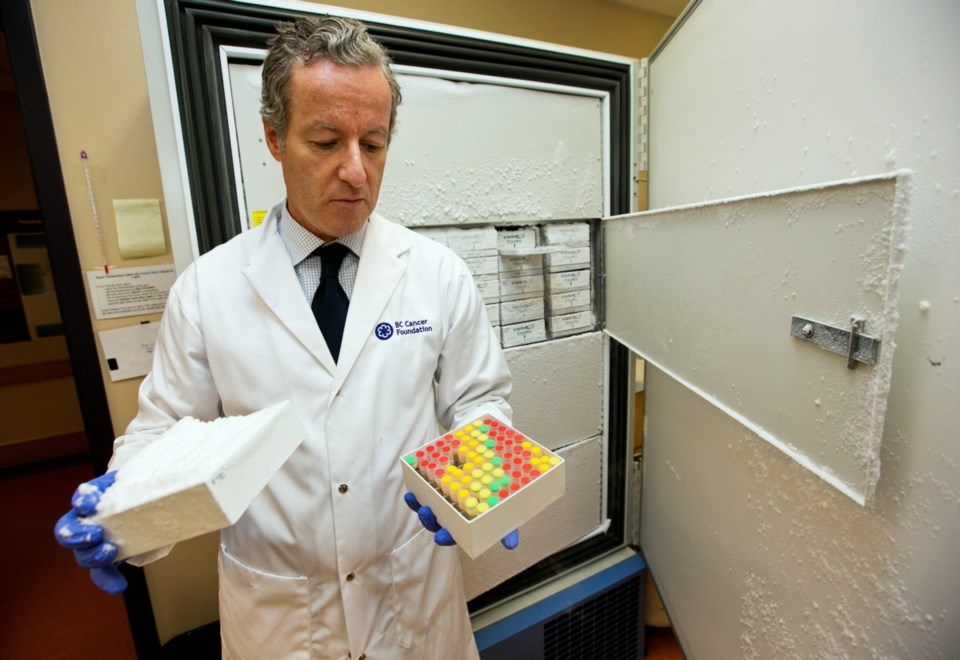Thousands of blood samples divided among freezers at the Deeley Research Centre in Victoria may hold the secrets to saving cancer patients’ lives.
The biobank, which holds samples donated by cancer patients before they begin treatment, is the first of its kind in Canada, according to the B.C. Cancer Agency.
It’s important study material for researchers looking for the determinants of cancer, said medical oncologist Dr. Nicol Macpherson. It may also help answer why some patients experience radiation burns, nausea and infection during treatment, while others don’t.
“Why is this group of patients doing so poorly compared with that one? They’re all breast cancer, the tumours all look the same under the microscope, but this group has poorer outcomes and these others don’t,” Macpherson said.
The project — known as the Personal Response Determinants in Cancer Therapy, or Predict — launched in Victoria in 2006 with the help of a $100,000 gift from Sidney’s Frank and Betty Garnett, who have since donated an additional $100,000.
Since then, Vancouver Island cancer patients have contributed about 10,000 samples and given permission for followup studies. About 95 per cent of patients have chosen to participate in the project, according to the B.C. Cancer Agency.
Predict is about halfway to its goal of 20,000, which would significantly widen the genomic research scale, especially for less common cancers.
In late 2013, Predict expanded to Kelowna’s Sindi Ahluwalia Hawkins Centre for the Southern Interior. There are plans to host banks at all six B.C. Cancer Agency centres.
The blood samples are broken into two parts: a solid part containing DNA, and a fluid part containing components such as vitamins, proteins and sugars, Macpherson said. The bank stores both. “We don’t want to assume the answer is just in the DNA.”
That fluid portion, in particular, sets the blood-based biobank apart from the more common tumour-based biobanks, Macpherson said. The fluid part of blood contains answers about a person’s immune system, iron levels, vitamin levels and more. While one tumour can be compared with another and DNA can be analyzed in both, the blood-based biobanks provide a broader picture.
“What’s happening in the non-tumour part of the person? You couldn’t answer that just by looking down the microscope at a tumour,” he said. “That’s why this is distinctly different.”
Building the bank now also means new theories can be tested as they emerge, he said.
“People are interested, for example, on the impact of stress on cancer. Maybe we haven’t yet figured out a particular stress protein, but we will in five years’ time,” Macpherson said.
At that point, researchers will be able to tap into the biobank and examine the rate of cancer patients who had higher levels of the stress protein at the time of diagnosis, he said.
“We now have this bank that we can go back to, to answer those questions, instead of saying, ‘Oh, interesting question. Let’s start collecting samples.’ ”



